#Hiking essentials
Text
Unleash Your Adventurous Spirit: The Ultimate Hiking Guide to Pinnacles National Park, California
Welcome to the magnificent Pinnacles National Park, the hidden gem of California! Discover the thrill of hiking through untouched wilderness, climbing steep terrains, and immersing yourself in mesmerizing landscapes that leave you breathless. This comprehensive guide will equip you with all the information you need to make your hiking experience unforgettable. From trails that challenge seasoned…

View On WordPress
#California hiking#California landscapes#California travel#Hiking essentials#hiking guide#National Park tours#Nature trips#outdoor adventure#Pinnacles National Park#Pinnacles trails#Scenic hikes#Trail guides#wilderness exploration#Wildlife discovery
5 notes
·
View notes
Text
Camplify’s must-have tips for embracing the journey of solo travel
To help you navigate solo travel, Camplify presents an in-depth exploration of essential tips to ensure an unforgettable trip.
Embarking on a Solo Travel Expedition
Embarking on a solo travel expedition is akin to stepping into a realm of boundless possibilities, where each encounter and experience shapes your journey in unique ways. To help you navigate the exhilarating world of solo travel with confidence and ease, Camplify presents an in-depth exploration of essential tips to ensure an unforgettable trip.
Prioritise…

View On WordPress
#adventure preparedness#adventure travel#adventurous solo travel#audiobooks for travel#Camplify#connecting with nature#driving limits#embracing solitude#emergency kit#emergency preparedness#exploring nature#exploring solo#exploring the unknown#fatigue management#first aid essentials#hiking essentials#hiking gear#hobby travel#journaling#journey preparation#keeping in touch#making friends while traveling#meet new people#nature escapades#navigation apps#open-minded travel#outdoor adventures#personal safety#photography#quality travel gear
0 notes
Link
#travel hacks#travel#travel and tourism#travel backpacks#travel backpacks for women#women's backpack#travel essentials#travel tips#hiking gear#hiking essentials#backpacking
0 notes
Text
Unleash Your Adventurous Spirit with the Rip Wheeler Yellowstone Jacket
Introduction: When it comes to outdoor adventures, having the right gear can make all the difference. Whether you’re exploring the rugged wilderness, embarking on a thrilling hiking expedition, or simply looking for a stylish yet practical jacket, the Rip Wheeler Yellowstone Jacket is a versatile choice that will undoubtedly meet your needs. Inspired by the iconic landscapes of Yellowstone…

View On WordPress
#Adventure Apparel#Durable Outerwear#Hiking Essentials#Iconic Design#Outdoor Gear#Rip Wheeler jacket#Stylish and Functional#Versatile Outdoor Clothing#Weather-Resistant Jacket#Yellowstone National Park
0 notes
Text
Explore the Great Outdoors: Top 10 Hiking Boots for Any Adventure
Here are the top 10 hiking boots according to me.
#hiking #hikingboots #hikerboot
Introduction
Whether you’re a seasoned hiker or a beginner, having the right pair of hiking boots can make all the difference when it comes to comfort, support, and performance. Here are the top 10 hiking boots on the market today.
Salomon X Ultra 3 Mid GTX Hiking Boot
The Salomon X Ultra 3 Mid GTX Hiking Boot is a popular and reliable choice for hikers. The boot features a Gore-Tex waterproof…

View On WordPress
#hiking#hiking canada#Hiking equipments#Hiking essentials#Hiking Guide#Hiking Tips#hiking usa#hikingboots#Waterproof Ankle Boot
0 notes
Text
my favourite thing to do when designing outfits for characters is for sure thinking like. “can i imagine this guy taking the time to put this on in the morning.” cuz this DOESNT mean that characters won’t ever have fancy and fun outfits, but i feel like it does mean that if they DO then that’s also gotta say something abt the character
#and it could be a BUNCH of different things. maybe this character just likes dressing up. maybe it’s religious. maybe it’s to impress#etc etc#STUFF LIKE THAT#i love when you can just like. read into characters by looking at what they’re wearing or what they’ve got in their rooms n stuff#if your dnd adventurer who essentially hikes around is wearing like. a bunch of fancy clothes then maybe that implies that this guy is like#willing to go through pretty significant discomfort and inconvenience just to look good#ITS RLY FUN I THINK
92 notes
·
View notes
Text
Beginner Hiking Guide:
Gear - What to Bring Hiking

What you want to bring with you on a hike will vary depending on what kind of hike you’re doing. If you’re going on a very short (under an hour) and easy hike on highly-trafficked and easily accessed trails for instance, you may not need to bring much at all -- though I always recommend a water bottle, sun protection and a hoodie or something. But if you’re doing a longer trek on backcountry trails out in the wilderness, you’ll want to bring quite a bit more with you, because the stakes are higher if things go wrong.
My general rule of thumb is: Pack for the Worst Case Scenario.
What is the worst that could happen if you get lost or injured? How long would it take for someone to find you if your phone died and you couldn’t call for help? If you get stuck out overnight, how cold is it going to get, and will you be able to survive it? How about if you have to wait several hours for a rescue party to carry you out if you can’t walk?
I carry a bunch of emergency items in my pack that, on an ideal hike, I never need. But if things don’t go ideally, given the places and conditions I hike in, they could save my life. In the list below, I’ve put an asterisk next to items I recommend packing even for short day hikes (2 hours or less)
So let’s start with the most important thing:
You Need a Backpack.
If you’re going to carry supplies, you need something to carry them in, and a backpack is the easiest, most comfortable way to do so that won’t compromise your balance or leave you unable to use your hands on a hike. (On short outings, fannypacks are great, but you’ll want a backpack if you’re going out into backcountry).
DON'T: use a drawstring backpack -- this will dig painfully into your shoulders pretty quickly.
DO: use a backpack with a waist/hip strap (and chest strap if possible). Having more of your pack’s weight on your hips than on your shoulders will cut down on back pain! The more adjustable, the better; you want to be comfortable.
There are really great hiking specific backpacks out there, but they are on the pricey side. It’s something where, if you plan on doing hiking more regularly, I would recommend investing in a good pack, but for your first time your old book bag will probably do okay.
The Ten Essentials
If you do any research on backcountry hiking, you will probably see “the ten essentials” mentioned somewhere. These are the things that you’re recommended to always bring on a hike with you if you’re going out into the wilderness. The list can seem a little daunting, but honestly a lot of the things on it are pretty small and easy to acquire.
1) Navigation / Map & Compass* -- Have a paper map in a ziploc bag and a compass in addition to any digital tools and GPS you may be using to navigate. Technology fails, and having a map that you’ve familiarized yourself with before you set out will help you to stay on your route and avoid getting lost. REI has useful articles on how to use a compass and how to read a topographic map.
2) Nutrition / Extra Food -- I always bring food hiking. You burn through a lot of energy while hiking, and snacking will help boost your energy levels and keep you moving. Calorie-dense foods with sugar and protein like trail mix, nuts, and granola bars give you the biggest boost while not taking up too much room in your pack. And if your hike runs over, you’ll be grateful for the extra rations.
3) Hydration / Extra Water* -- I typically bring a full liter of water (or gatorade!), minimum when I hike. Nalgene bottles are great because they’re lightweight and virtually indestructible. You’re going to be losing a lot of moisture through sweat and through the vapor your exhale while breathing heavily, so you are going to need to hydrate. Bring more than you think you’re going to need in case things go badly.
4) Insulation / Extra Layers* -- I talked about this in the post about clothes, but always have an extra layer. If the weather shifts, or you get injured and can’t move to keep warm, or you get lost and need to wait for a rescue, the last thing you need is for hypothermia to come along and make your day worse.
5) Illumination / Light -- There’s always a chance of something going wrong, be it a twisted ankle or just misjudging the length of a hike, that can lead to you being out for longer than you anticipated -- and if you’re stuck out in the wilderness when the sun goes down, you want to be able to see where the hell you’re going to find the trail and get home. On any longer hike (especially if you’re starting later in the day), bring a headlamp or flashlight with extra batteries (and test it before you leave!)
6) Emergency Shelter -- Is there any chance that on the hike you’re doing, you could potentially get lost enough that you have to spend hours and hours out here? In the theme of extra layers, if you get lost, injured, or otherwise caught out in bad conditions and can’t hike out on your own for any reason and rescue won’t be there anytime soon (search and rescue teams take time to assemble, deploy and then hike out to you), you want to have some means of shelter. Obviously, you don’t wanna drag an entire tent out into the woods if you’re just going on a day hike, but a there’s a few lightweight options that can make a difference when you’re improvising protection from the elements, such as:
A mylar space blanket / shock blanket
A bivvy sack (basically a lightweight plastic sleeping bag that keeps warmth in and water out!)
....And if you’re on a budget, a large plastic trash bag can do in a pinch!
7) Firestarter -- On the topic of shelter, especially if you’re stuck out in the cold overnight, a fire can be an emergency source of heat and light. Since most of us are not capable of starting a fire just by rubbing two sticks together like in the movies, we’ll want to make it easier on ourselves by bringing something to start a fire with: pack something to ignite it with, and something to use as tinder to catch the flame and sustain it long enough to ignite other fuel you’ve gathered. I personally carry a bic lighter that was like, .99c at the gas station, and a toilet paper tube stuffed with dryer lint for tinder. This is one of those “hopefully you never actually have to use it” things.
8) First Aid Kit* -- You want to be able to treat an injury if it happens, and to address smaller health concerns before they become bigger health concerns. With blisters especially, an ounce of prevention is worth a pound of cure -- putting blister pads on your feet when you’ve got hot spots before they turn into full on oozing blisters is going to make a world of difference. And as someone who has taken a nasty spill on the trail and hiked out injured, I always carry a solid first aid kit with me. You can buy a compact pre-made kit easily enough to carry with you, but you may find yourself customizing it to your needs. I recommend having the following:
Ibuprofen -- good for managing pain, swelling, and soreness
Tylenol/Acetaminophen -- pain reliever, fever reducer, better for head injuries than ibuprofen since it doesn’t thin blood (also, if you’ve hurt yourself and you’re in a LOT of pain, you can alternate Tylenol and Ibuprofen)
Benadryl or some other antihistamine for allergies
AfterBite -- good for stings and bug bites
Bandaids in assorted sizes
Blister pads
Disinfectant wipes x 2
Gauze
A triangular bandage
A lightweight SAM splint
Ace bandage - good for wrapping sprains
Tweezers - good for removing splinters!
Any important medications you personally need, such as an EpiPen or inhaler, or personal joint braces you require
9) Sun Protection* -- Even if you’re hiking under tree cover, or on a cloudy day, with hours spent outdoors, you’re getting a lot of UV exposure. Regardless of whether you’re someone who sunburns easily or not, it’s good to have sun protection. Bring sunglasses and sunscreen, and consider wearing a hat. Especially at higher elevations, where the air gets thinner and blocks less UV radiation! And don’t forget when hiking in winter, that you can get snowblindness and sunburn from light reflected off snow.
10) Repair Kit + Knife / All That McGuyver Shit -- A few lightweight and simple objects can make it much easier to jury-rig a shelter, replace a snapped bootlace, or hold together a torn pack until you can get back to the parking lot. I personally always have:
A pocket knife/multitool
Flat-wrapped duct tape
Several safety pins
A handful of zip ties
A spare shoelace
And other people may find other items useful depending on their gear and the kind of repairs they might need.
In addition to the stuff on this list, there may be weather-specific or trail-condition specific gear you might need, like microspikes for traction on ice, or rain gear for hiking in wet climates. You can use your best judgment and the recommendations of others who have hiked where you are hiking to figure out what the best packing list is for your specific hike. This list is a guideline and a starting point.
Other things you may want to bring:
Whistle -- if your phone is dead and you’re waiting for rescue, you can blow on a whistle a lot longer (and a lot louder) than you can yell. Three short bursts usually means ‘hiker in distress’ and will help other hikers or searchers find you.
Toilet Paper + plastic bag -- If you don’t think you’re going to be able to hold it, bring a means to go in the woods. But bring the plastic bag to carry out your used toilet paper so it doesn’t pollute nature (Leave No Trace!)
A ziploc bag big enough for your phone -- if you need to cross a river or if it starts pouring, have a means to bag your phone to keep it dry. If there’s a risk of rain, bring a trash bag as well that you can use as an improvised pack cover to keep your stuff dry.
Insect Repellant -- even if you don’t bring it with you and just put it on in the parking lot, if you’re hiking in spring or summer especially, you’ll want some bug spray.
Keeping It Light
You want to pack smart, which means maximizing the usefulness of what you pack while keeping things as light as possible. Try using a lightweight plastic water bottle instead of a heavy steel one, and packing spare layers that are warm without being too bulky. Put sunblock in a small tube or bottle instead of packing the huge family-size one. The weight adds up, and the final weight of your pack is what you’re going to have to be carrying along with you. Though the good news is, your pack will get lighter as you consume the food and water you’ve packed!
If you are hiking with friends in a group, there’s some things you don’t really need multiple redundancies for -- if one person has a well-stocked first aid kit and another person carries enough sunblock for the group, you don’t need three of each and every item. Communicate with your group to make sure all your bases are covered, but also be sure you stay close together while hiking. Your friend having the group’s utility knife isn’t going to help you if you go off on your own and get separated. And you will all still want your own food, water, clothing, and light.
Organize Your Bag
Having the right gear is helpful. Knowing where it is is even better!
I try to organize my pack so the weight is evenly distributed (with the heaviest objects at the center near my spine to avoid throwing off my center of gravity), but also so I can find stuff easily enough. If your backpack has different pockets and compartments, think about using those to organize your supplies. Put stuff you’re more likely to need to use in easy to reach places. I usually keep my water bottle in a side pocket that I can reach from the outside of my bag, and my snacks in the topmost compartment so they’re easy to get to and not squished.
I also have a couple of lightweight smaller bags inside my pack I organize things in -- a mesh bag I keep all my first aid supplies in so I can pull out the splint, main kit, extra bandage, AfterBite, etc. all together, and a waterproof stuff sack that I keep all my “emergency” supplies (bivvy sack, shock blanket, headlamp, lighter, knife, etc.) inside so they aren’t all rattling around loose at the bottom of my pack where I will never find them.
-
Using your knowledge about the hike you’re doing, the duration, the conditions, and your own body and needs will help you make smart choices about what you need to bring in order to keep yourself safe, both during your hike, and in the hypothetical scenario where something goes awry. Be informed, be prepared, and have fun out there!
<< Previous Part: What to Wear Hiking
114 notes
·
View notes
Text
Hangry.
It happens to the best of us.
You’re out in the park, having a good time. You’re skiing or walking, snowshoeing or hiking. Friends or family are all getting along, breathing the fresh air and enjoying the beauty of nature.

And then out of nowhere, hangry hits. You lose your energy, your motivation and your good mood. You’re hungry and a bit angry. What’s to be done?
Eat a snack. Have a picnic. Nosh on some yummy trail treats. (Drink water too. Staying hydrated makes everyone happier.) Prepare for your time in the park by packing some snacks or even a meal depending on how long you’ll be out. To be safe, don’t rely on restaurants or snack shops being open. Facilities can be limited in the national park in the winter.

One more thing to prepare while you’re at home; emergency food. Accidents do happen. Maybe your snowshoe adventure takes longer than anticipated. Maybe there’s some sort of motor vehicle accident that stops traffic for a while. Having an extra meal or food that doesn’t require heat or water can be mood saver or even a trip saver.
What’s your favorite snack to bring to the park?
What is your favorite memory of a meal you enjoyed while out hiking or recreating? ~ams

More information on the 10 Essentials can be found on this website https://www.nps.gov/articles/10essentials.htm Park information on winter safety can be found here https://www.nps.gov/mora/planyourvisit/winter-safety.htm For current conditions, these webcams may be helpful https://www.nps.gov/mora/learn/photosmultimedia/webcams.htm
These photographs are from past years. NPS Photo. Snowshoe hare tracks on the snow in an open area. Snow covered trees in the background with a clear blue sky. December, 2013. NPS/Loving Photo. Snow covered road through Longmire Stewardship Campground with snow on trees and sun flecks on the snow. December, 2016. NPS Photo. View from Westside Road of Mount Rainier with clouds. Trees silhouetted on the sides. May, 2019.
57 notes
·
View notes
Text
tbh i do feel like a lot of sport dog or general dog people's confusion regarding why certain gear not made for specific sports does not work for that said sport comes from a general lack of people who do not have a lot of personal experience wearing sport equipment or doing sports themselves.
Obviously people not having that experience is not a bad thing, we all learn and grow and it's great imo that people want to do active things with their dogs (any little bit you do is positive in my eyes). But it's just a fact to me that when you, personally, have experience with how YOU feel in different type of sports equipment, that knowledge certainly transfers to animal sports as well.
#dogblr#dog gear#this message brought to you by your former emo jock darkwood.....#so many shoe fittings to not feel pain#so much tailoring things to each individual need#can you imagine if i tried to do gymnastics in hiking boots. or even run track in hiking boots#that's what a lot of people are essentially asking of their dogs#and btw when we talk about modular 'all in one' dog equipment it's like#the gear equivalent of 3 in 1 mens shampoo#it works alright#and it's better than not having correct gear#but it's not going to work as well as the gear specialized for that sport#would you bring a field hockey stick to an ice hockey game? absolutely fucking not#when i say i am a sports coach to my dogs i mean it lol#i'm here to make sure they can perform the best they can#and take them out of the game if they need it so they don't overrun their limits#to help stretch them and keep them supple and healthy#and give them snacks. lots of snacks.
24 notes
·
View notes
Text
ik i do rb scenic desert stuff on occasion but also i wanna throw my own photos on this blog so you guys can understand some of what i'm coming from for The Vibes. or smthin like that
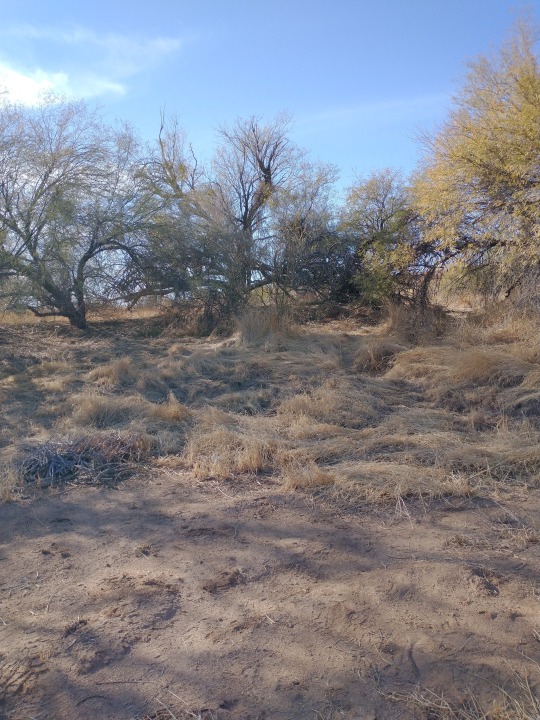



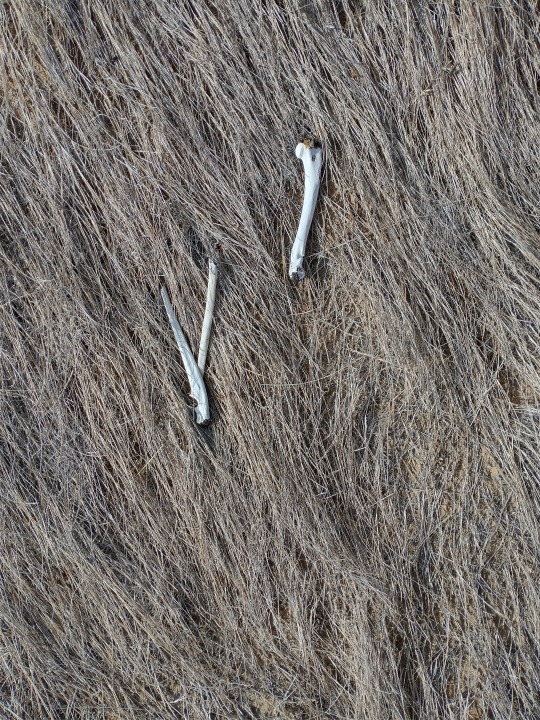
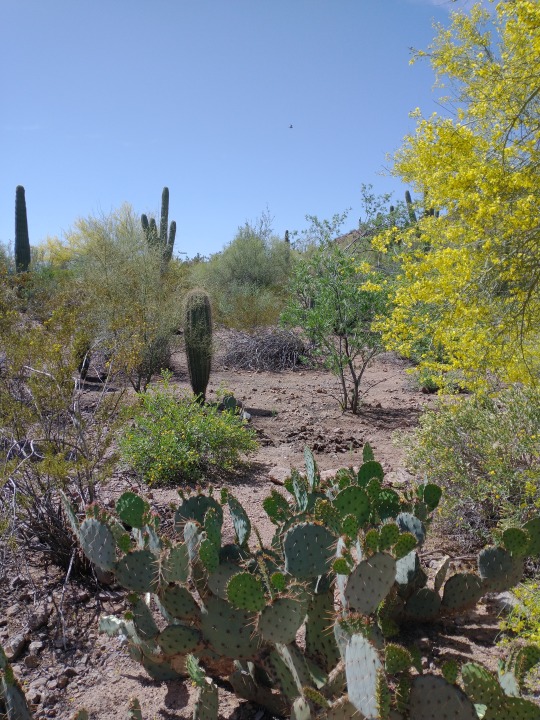


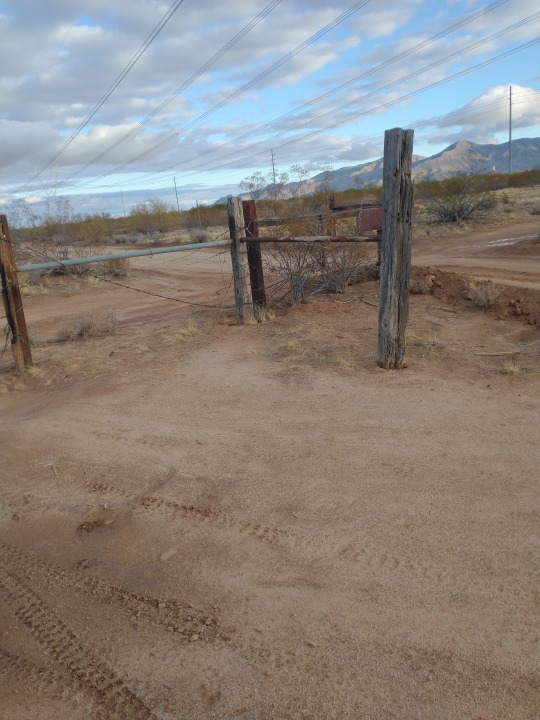
#i currently have. three stories that take place in what is essentially the sonoran desert but fictional#ttw takes place in the city so it's not as overt as honeybee bc that one actually features the desert as a setting and not only#as the surrounding landscape to the city#when the smoke clears also takes place in the desert but i need to think more abt how that affects the setting if that makes sense#btw whenever i say i need to go wander in the desert this is what i mean hgkhfdl i live in the city tho so it's not as easy as just#stepping outside. gotta go drive n shit. i'd like to go on more hikes but maybe i should try to invite ppl on them idk#mmm. it's heating up though dunno how many people wanna go hiking in 80-90 degree weather. i mean i would but#<me saying that is not a flex i get cold once it drops below 70 i am pathetically bad at producing body heat#looking through my photos is also like. where the fuck are the saguaros. i see those bitches constantly#also idk how obvious it is but it doesn't snow here so that doesn't factor into any of my thought processes really#okay technically it does but it's so rare and so little that it's nothing really#thicker than water#honeybee#when the smoke clears
3 notes
·
View notes
Text
Exploring the Benefits of the CamelBak Snoblast Hydration Backpack
Blog Introduction: When it comes to hiking, packing is key. One backpack that has been garnering attention recently is the CamelBak Snoblast Hydration Backpack. As an outdoor enthusiast myself, I decided to give it a try and see how it fared on my recent hiking trip. I was delighted to find that the Snoblast more than exceeded my expectations and proved to be the perfect companion for all my…

View On WordPress
#adventure equipment#CamelBak Snoblast#Gear Storage#Helmet Carry#Hiking essentials#hydration backpack#outdoor gear#Stay Hydrated
0 notes
Text
Just a Little Bit
As the seasons begin to change and thoughts of getting outside start to bubble up into our hopes, dreams, and memories it seems appropriate to consider options. Generally when the topic of the Pacific Crest Trail comes up in conversation or reading, or in film it is framed around thru hiking. Beginning to end, start to finish. "Damn the torpedoes! Full speed ahead!" or something like that. Thru hikes are stories mostly full of success. Participants overcome adversity and find their way forward. Thru hikes get the glory it seems.

A short snowy early fall day hike on the PCT with a friend.
To day hike on the PCT is easier for some than others mostly given where you live. Living in Kansas for example, you are not going to call your friends up and say, "Hey, how about we day hike from Rainy Pass to Cutthroat Pass this weekend?" or " Let's meet at Kennedy Meadows and do a day hike...what do you say?" The day hike option in the immediate sense is challenging for a lot of us. Less so when people have some time but not a lot of time to do a more challenging or ambitious undertaking like in the summer months.
I met a fellow once who was driving to PCT trailheads on the weekends and day hiking out and back to his car. He didn't have the luxury to take extended time off of work and other responsibilities so this worked for him. To be honest the PCT is not exactly easy to move from trail head to trail head everywhere. He happened to live where it was more possible.
In my case I can easily consider various day hikes on the PCT from where I live. They might be longish days or require sleeping in my vehicle or a nearby accommodation but still doable. If you are dreaming of a PCT experience here is your opportunity to get a taste.
Jack Haskel at the PCTA wrote a really honest and informative essay in the organizations magazine 'The Communicator' last spring. He writes," The decision around what to pack for a day hike also became easier when I stopped overthinking it. I embraced the 10 essentials, added a couple of extras, and now all the necessary items live in my day pack permanently." Here's the list:
Navigation- paper maps and/or phone app maps
Headlamp-sometimes the best laid plans just take longer than your think.
Sun protection
First aid- maybe not for you but for someone else...
Knife plus gear repair kit
Fire (matches, lighter, tinder and/or stove)
Shelter (ultralight mylar emergency shelter that fits two people)
Extra food
Extra water
Extra clothes
In addition tell someone where you are going and when you plan to get back. This is critically important for staying safe. Jack also carries a knife, compass, energy bar, and some spare batteries. His view, and I agree, better to be safe than sorry.
If you don't have the time, energy, desire, opportunity, or some other good reason for a lengthy PCT hike consider a day hike. Just walking a short distance with friends on the PCT has been rewarding for them as much as it has been for me. They got a taste of what my experience was and it sprouted some great conversations and experiences of their own. These experiences bring up so many memories flooding my brain from past hikes when I have done this.
2 notes
·
View notes
Note
💭 Since we're here, thoughts from Nillan on the whole party too, and on the vampire gang
Send 💭 for a thought my muse has had about yours
@undyingmedium

"And they did this all themselves, just the five of them..." She walked with a gentle slowness, watching the blood splattered across stone, kneeling to inspect the ruined corpses, and frowning at the horrible experiments that were stopped. The Meat Forge was now devoid of life, inhabited only by the legion of vengeful wraiths that were unleashed upon it. "Good riddance. Quite very impressive though. I would have needed a small army for this, maybe 10 handpicked and involve the troll too. In fact, that might not even had been enough, depending... hmm..."
She took a little chain of praying bones hanging on her waist and looked for an important-looking corpse. "Let's see how they did it, and where the rest you rotten filth are."

(CONTEXT: The "vampire gang" is a young vampire girl and 4 (now only 3) vampire kids that my players befriended and brought into the current city, then the players left for a few months, during which Nillan found them and helped them in the background.)
"They seem free, but Avi won't speak the name of who turned her, and that silence doesn't seem entirely voluntary. It makes no sense to keep her bound unless her master plans to later come back for something... curious..."
#Nillan#My players assaulted and wiped out a cultist base in the forest that focused on creating monsters from people and creature parts#in the end they disabled a seal that prevented the vengeful wraiths of the victims from manifesting#thus the base got overrun by angry murder-ghosts right after they left#they ALSO put Nillan on the closest edge of the city for completely unrelated reasons at roughly the same time without knowing she's a necr#Nillan being a Death Shepherd and hiking for a hobby sensed the now obscenely haunted place in the forest and went to check it out#seeing that the place was a good base with a legion of angry wraiths already protecting it and full of fresh dead to be raised#she moved in with the rest of her undead and started hunting the remaining cultists in the area#because she saw the horrible things they did and yeah fuck those guys#THEN my players informed her that they also called essentially the inquisition on the place and they are coming in probably X days#So now that Nillan essentially gathered an army in a fortified base she has to flee the region asap and hope the inquisition won't track he#she didn't even plan on building an army and now my players made her a genuine threat with 90% indirect actions#Being a GM is fun
2 notes
·
View notes
Text
I know I’m preaching to the choir on tumblr but I am so FED UP of not being able to walk to places that are really close to me because it is assumed that everyone has a car and would only use their feet for recreational purposes so there are long stretches of road with no path alongside them, and no public paths that don’t take you six miles out of your way for what should have been a quick trip to the next village over.
#Sure I could walk along the road- if I wanted to get killed by Roddy the Perthshire Boy Racer#Or Gordon the estate agent in his fancy car speeding because he just can't be late for his meeting#Not to mention being right across the dual carriageway from somewhere but having to go the long way round#So I want to cross the road then walk uphill to the village which should only be a mile on foot at most#But sadly there was a traffic jam in the middle of Dundee so the traffic is backed up halfway to Perth#And I can't cross the dual carriageway without getting uncomfortably close to frustrated people in SUVs#So I now have to go two miles down the road to find an underpass and then walk back up the other side of the road#which often doesn't have a path just a badly cut verge; all the while breathing in petrol#All of this takes nearly two hours for what was essentially CROSSING THE ROAD#There should be pavements beside all public roads though no matter how small this is a hill I will die on#And a footbridge or underpass for every turn off#People who live in the countryside shouldn't need to take their lives into their hands just to walk from their house to the nearest town#The alternative being to hike uphill through somebody else's woods where you can never be sure if they're shooting and cross a river#This taking you out of your way by about four miles and then you have to carry your shopping all the way back again#The roads belong to foot passengers (and horses) first#Cars only came along in the last hundred years but they've taken over and people don't seem to realise it
28 notes
·
View notes
Text
trying to monitor if my new meds are working and how i feel, but now im consumed with slimy anxiety about a rent hike and the pre-emptive stress of apartment hunting. fucking six months in advance 👍
#it feels so prissy and fragile but literally if im in a shoebox apartment i get so fucking depressed so fast its really not worth cheap rent#and my current place is in a great location re central to essentials and transport and stuff#plus moving is just such a huge hassle yk...but i also dont want to pay more rent#its just such a principle of the matter thing like. you guys are not giving ANYTHING extra why the fuck are you allowed to hike rent 😭#whatever. so pissed off over how pissed off this has made me ahdhsjd
1 note
·
View note
Text
Hiking Gear & the 10 Essentials
So, I'm prepping to go on my first solo winter hike tomorrow, and in making sure I'm geared up, I'm going through my pack and making sure I have 'The Ten Essentials'
What are the Ten Essentials? The general consensus and list from REI says:
Navigation
Illumination
Sun protection
First aid
Knife + a gear repair kit
Fire
Shelter
Extra food
Extra water
Extra clothes
So, here's my pack:
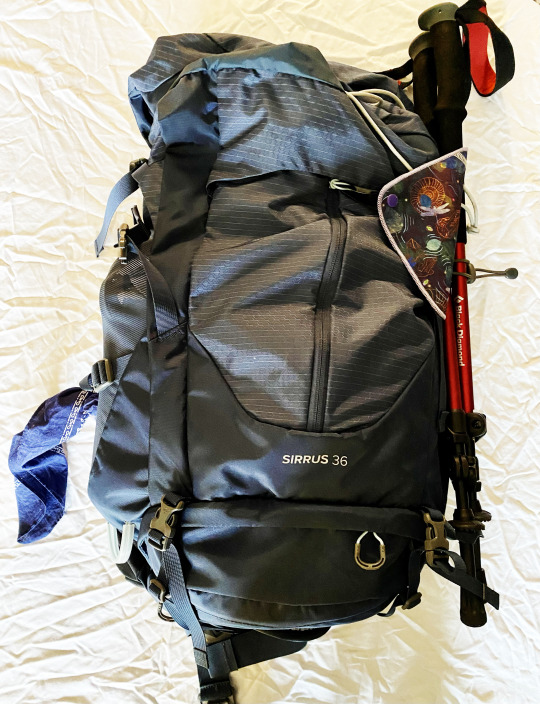
It's a 36 liter pack, has an adjustable waist and chest strap, and it's very comfortable and great for making sure I can carry what I need. Here's what's inside...

Navigation
I have a set of maps of the mountains in the various subranges of the range I enjoy hiking in, and have a small compass that attaches to my pack's shoulder strap. I can bring whichever map is relevant to the hike I'm doing that day and slide it into its plastic pouch to keep it dry!
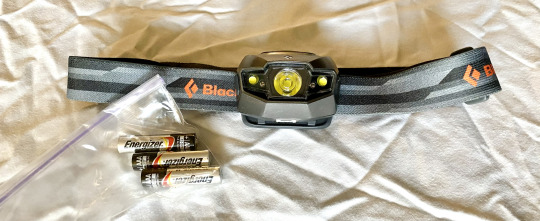
2. Illumination
This means headlamp! If you get caught out after dark, having a headlamp is pretty essential so that you can see the trail markers and get back down without getting lost or badly injured. I keep the batteries in a separate baggy to prolong battery life, and test them before hiking to make sure they work.

3. Sun Protection
In the summer, I will bring a tube of sunscreen with me and reapply during my hike; in winter I sweat a lot less and am more covered up, so I admit, I just apply some in the parking lot, especially when most of the hikes I do are in the shade. But I always bring sunglasses with me! It can get pretty bright up on the summit.

4. First Aid
Okay, I go a little overboard here, but having been seriously injured on the trail, I err on the side of being prepared. I have a comprehensive first aid kit for longer outings, glacier gel for blisters, afterbite for insect strings and bites, a lightweight foam splint for broken bones, medical tape, and an ace bandage. There's also a little pouch with an antiseptic wipe, a few bandaids, and some advil and tylenol that I keep in an easy-to-reach pocket -- on very short outings, I sometimes just take this. If I'm hiking with someone else and they have a first aid kit, I may leave some of this behind since there's not that much need for redundancy. But if I'm solo or the most prepared in a group, I make sure I'm stocked up.

5. Knife + Gear Repair
I call this my MacGyver kit. If something tears, breaks, or is otherwise borked, I can probably rig up a temporary fix with this. I have, left to right, some duct tape, a swiss army knife, zip ties, safety pins, and a spare bootlace. Great for reattaching broken straps, fixing a broken boot, assembling shelter, etc.
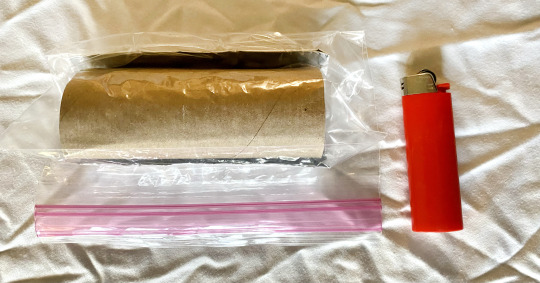
6. Fire
I deeply hope I'm never in a situation where I am so fucked I need to build a fire out in the wilderness to survive the night, but if I ever am that fucked, this will help. I have a lighter, and a bit of tinder -- in this case, a toilet paper roll stuffed with dryer lint, to use as a fire starter.

7. Shelter
Again, never want to have to spend an unintentional night outdoors, but if I do... Here I have two itty bitty things that could save my life. There's an emergency bivvy -- basically a plastic sleeping bag that you can climb into that will keep out water and reflect some of your body heat back at you, weighs about 4.5 ounces -- and a space blanket. Combining these, in addition to building a fire and using my knife and other supplies to rig together a lean-to out of branches to keep myself out of the wind, I could probably make it through a cold mountain night in a worst case scenario situation.

8. Extra Food
You burn through a lot of calories on the trail, so it's always good to have snacks. I often bring a sandwich and maybe a cookie to eat on summit, but in addition I have nonperishable sugar- and protein-rich snacks, such as trail mix and granola bars. I also keep a spare baggie for my trash!
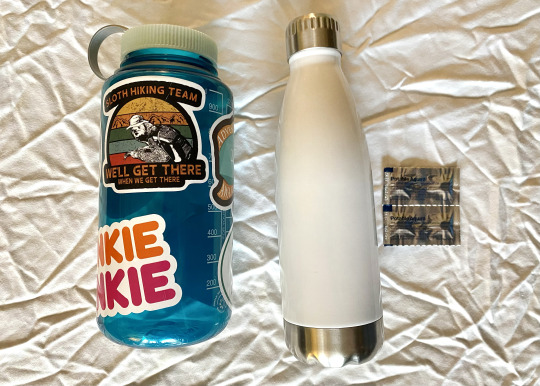
9. Extra Water
In the summer, I always bring two liter-sized water bottles with me because I drink like a fish, and dehydrating on the trail is a big problem. In the winter, where I sweat less and get less thirsty, I've been bringing a liter and a half with me and doing fine (I usually drink the liter on the hike, and polish off the rest back down in the parking lot). But I also have water-purifying tablets with me, in the event I wind up lost and in need of water -- there's a lot of natural streams and water sources near the trails around here, but there's also a lot of wildlife so some method of water purification is necessary if you're going to drink from them if you don't want to ingest some microbe that's gonna make you sick as hell.

10. Extra Clothing
I will probably be fine on this hike with a thermal shirt and a fleece jacket, but I am packing my puff jacket just in case, as well as extra gloves and extra socks, in case I slip on a water crossing and get my feet wet. My puff folds up pretty small and is very lightweight while being very insulating, so it's perfect for winter hikes. In the summer, for a low-altitude hike, I will often bring a sweater and a windbreaker. Usually when I'm hiking, I'm VERY warm, but as soon as I stop moving, be it to take a breather, to enjoy the view on summit, or if Something has Gone Wrong™, I'm going to get chilled and want those added layers.
And a few extras that aren't on the list, but which I bring with me...

BONUS: SOS
Whistle! This is a simple thing, but if I'm hurt or lost and need help, I can blow a whistle a lot louder and for a lot longer than I can yell. Three short blasts means "Hiker in distress" and the sound will carry. And unlike a cell phone, whistles don't need signal or batteries.

BONUS: Sanitation
Yeah, sometimes, you gotta pee in the woods. For that, I have my kula cloth (antimicrobial reusable self-sanitizing pee cloth that clips to the outside of my pack), a pee funnel so I can pee standing up without dropping my pants and having to awkwardly squat, and in the event I'm ever out long enough that I gotta number two, something to wipe with and a plastic bag to carry my wiping material out with so I don't leave dirty tp out in the woods.
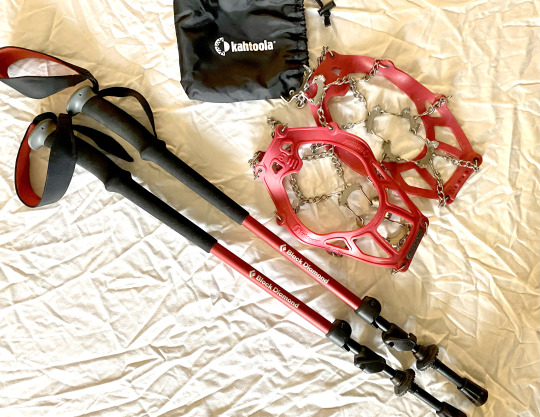
BONUS: Traction & Mobility
For winter hiking, I bring my microspikes. These are a rubbery frame that slides on over your boot with little chains with short metal spikes on the bottom, which dig into the ice you're walking on to give you traction so you don't slip.
I also love bringing my trekking poles on hikes to help with my balance, stability, and impact on my shitty knees.
So, that's my full inventory of gear! Feel free to drop any questions in my askbox.

41 notes
·
View notes